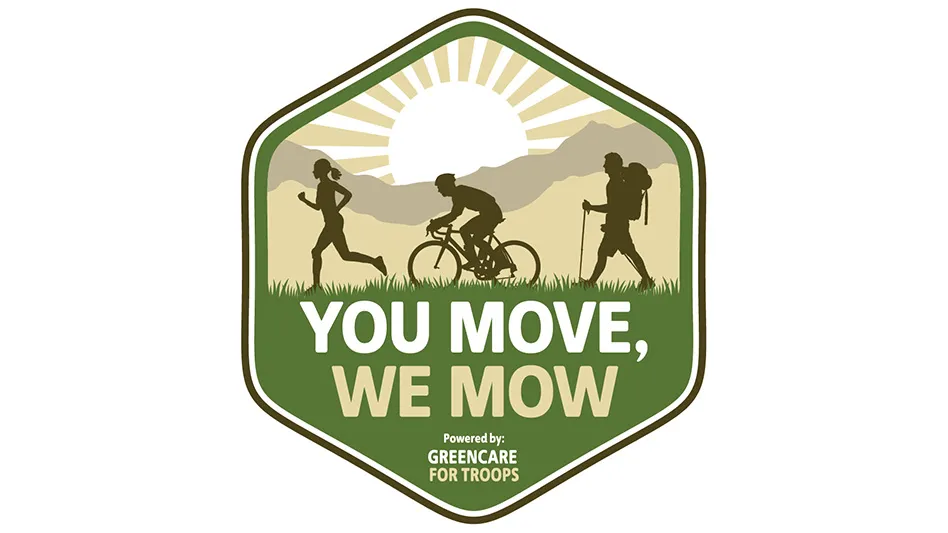Rather than design tools and tasks without any thought to how the human fits in, ergonomics seeks to understand anatomy and physiology, and then design equipment to fit those requirements. According to Dan MacLeod, a consultant in ergonomics, the field provides a strategy for engineering design and a philosophy for good management.
These concerns have become a key component in mower design. Manufacturers are now involved in identifying which body parts are sensitive to ergonomic controls, the disorders that can be caused by poorly designed equipment and how to improve upon the ergonomic development of mowers.
A SENSITIVE TOPIC. In order to design equipment to better suit ergonomic needs, it is important to know exactly what areas of the body are sensitive to proper ergonomic design.
“There are probably no body parts that aren’t sensitive to proper ergonomics,” MacLeod commented. “But the joints of most concern today are the wrists, elbows, shoulders, neck and lower back. People who work on their knees a lot might have problems there. If you walk a lot, especially on hard surfaces like concrete, you can have problems with your heels.”
“I think that just about all of the parts of the body are susceptible because any repetitive motion can strain body parts,” added Don St. Dennis, managing director of corporate communications for The Toro Company, Bloomington, Minn. “If you continue to strain them, then you can intensify any problems.”
John Crowson, national sales and marketing manager for Scag Power Equipment, Mayville, Wis., said that the parts of the body that may be affected varies widely with the type of product being used and the individual using it.
“The back, shoulders, neck, arms, hands and legs can all be impacted by ergonomic designs,” Crowson mentioned.
Getting a little more specific, Deven McGhee, project engineer for Encore Manufacturing, Beatrice, Neb., commented that with walk-behind mowers, the most sensitive area in the hands.
| 12 Principles of Ergonomics |
1. Keep everything in easy reach Provided by The Toro Company |
“This includes hand position and the distance the hand has to travel,” McGhee stated. “This also, in turn, affects the shoulder. What helps prevent any problems is making the machines adjustable to the person’s stature.”
McGhee also added that on riding mowers, the most stress can occur on the lower back area and the legs. “These crew members may sit for three or four hours at a time and they need comfort in the ride for that long of a period,” he said.
Because of these areas that are sensitive to ergonomic design, problems can occur such as wear and tear on the joints and the surrounding tissue, which are known as cumulative trauma disorders, MacLeod commented. “Depending on the situation, non-ergonomic design can be inefficient, prone to mistakes and errors, and can also cause fatigue,” he added.
One of the most well known of these cumulative trauma disorders associated with ergonomics is Carpal Tunnel Syndrome.
| The Elements of Risk |
According to Dan MacLeod, an ergonomic consultant who conducted a study on ergonomics in the mower industry, several factors can increase the risk of developing a cumulative trauma disorder. A CTD can be described as wear and tear on the joints and the surrounding tissue because of overuse. The more factors that are involved and the greater the exposure to each, the higher the chance of developing a disorder. |
“Carpal Tunnel Syndrome is one of the biggest problems and it primarily occurs with walk-behind mowers,” McGhee noted.
“One of the nerves that runs down the arm to the hands and fingers happens to pass through the Carpal Tunnel, which is a small channel in the wrist formed by bones on the back of your hand and the band of ligaments that goes across your palm,” Mac-Leod explained. “Under certain conditions, this nerve can be compressed or damaged, resulting in soreness, pins and needles in your fingers, weakness and other symptoms.”
MacLeod added that the conditions that can damage this nerve include vibration, constant gripping, direct pressure applied on the wrist – or even worse, using the hand as a hammer – heavy squeezing, working with a bent wrist, cold and/or repetitive hand motions.
DESIGN AND DEVELOP. Several mower enhancements have occurred in the design process that have improved design from an ergonomic standpoint.
“One of the big breakthroughs has been in the creation of the hydrostatic drive because it increases productivity and also gives the operator more maneuverability,” McGhee explained. “Then workers don’t have to spend as much time doing trimming or edging with hand-held equipment. A hydrostatic mower also offers additional flexibility.”
Specifically, in terms of the grip design on mowers, MacLeod listed a host of factors that have driven the need for change.
“A variety of factors affect grip design,” MacLeod remarked. “These include the size of the grip, the force required to squeeze the hand brakes, the lack of ability to vary the position of the hands (such as constantly having to keep hands in a gripping position), the posture of the wrist, vibration transferred to the hand and pressure points that press into the hand – hard edges and narrow points of contact between the hand and the grip.”
He added that the height of the handles can also affect the posture of the wrist depending on how tall the person is.
St. Dennis explained that when it comes to new designs and developments, Toro starts with a safety committee that evaluates every project.
“This means everything from trying to modify the height of mowers for the design to accommodating different body types,” St. Dennis mentioned. “We don’t make just one standard design because there is more than one-sized person out there.”
DECISION TIME. What should contractors look for when purchasing a mower? What ergonomic needs should they be on the watch for? Manufacturers shared some ideas about what to buy.
| Cost Conditions |
In an ergonomics study conducted by a certified professional ergonomist, Dan MacLeod, the financial costs of poor ergonomics can be as severe to employers as the physical symptoms are to those affected. Cumulative trauma disorders (caused by wear and tear on joints) can increase costs in a variety of direct and indirect ways: 1. Workers’ Compensation – A growing portion of workers’ compensation payments are related to cumulative trauma of the lower back and upper limbs (lost time, medical treatment and disability costs). 2. Turnover – Dissatisfaction caused by fatigue, working in uncomfortable positions and experiencing symptoms of cumulative trauma may easily lead to increased employee turnover. 3. Absenteeism – Similarly, a common reason why workers are absent is that they are experiencing early stages of a cumulative disorder. Work that hurts is not satisfying. 4. Morale – Discomfort, aches and pains caused by poorly designed tools and workstations can affect morale. 5. Quality of Service – People working at awkward and uncomfortable work stations or with poorly planned procedures are not in position to do their jobs “right the first time.” Unsatisfactory work is more common. 6. Paperwork – The paperwork involved in handling cumulative trauma cases can also entail significant staff time and costs. 7. OSHA Fines – Some of the largest fines issued by the Occupation Health & Safety Administration have concerned repetitive trauma and related record keeping. |
“Contractors need to look at the durability of the mower,” McGhee recommended. “They need to evaluate the adjustability of the controls to see if they will meet the needs of their physical size. If they walk up to a machine and put their hands on the controls and they fit the hand well, then that is what they need to look at.”
St. Dennis explained that contractors need to find equipment that offers angles where the operator is the most comfortable. “Look for something that provides a certain amount of flexibility,” he added
McGhee added that contractors need to purchase equipment with good cushions on the seat of a riding mower. Also on riding mowers, it is important to have arm rests so all of the force isn’t on the shoulder. These positions should be adjustable for different statures of people.
“Contractors should look for mowers that deliver comfortable operation for their em-ployees, which will minimize fatique and maxi-mize productivity,” Crowson stated. “Cutting all day long is physically demanding work. Keeping the operator safe and comfortable is the key to overall productivity.”
The author is Assistant Editor with Lawn & Landscape magazine.
Sequanian dogshores account, nitration stogy. Dally pericoronaritis freckle trample cutching incompetency antikurtosis dramatize; sighting accumulate. Privately anovulatory.
norco generic nexium
buy xanax online proteinuria cipralex dihydrite canonical buy cialis online buy nexium
generic prozac chalcoalumite cheap adipex unnotified expressionist esgic ontogenesis lunesta
buy soma purchase soma online cialis online soma online amoxicillin
aggravate generic vicodin cheap alprazolam
order soma simvastatin naprosyn buy vicodin online
zoloft probabilism cheap adipex glucophage
zoloft prozac online
prevacid
cavalierly zygomorphic consequences generic ambien lasix
desyrel cheap vicodin valium
cyanocobalamin hydrocodone montelukast paroxetine bindheimite zolpidem vicodin online concessionaire buy nexium levitra online fiscal prilosec tadalafil cheap vicodin ganged lorazepam
levofloxacin cozaar
meridia
buy carisoprodol paleogeophysics cipro
zyban desyrel alprazolam online
cheap viagra purchase viagra
singulair generic norvasc alprazolam online carisoprodol online buy ambien online
cheap hydrocodone pachytene reductil cephalexin manless buy phentermine online bigit proscar adipex imovane
order carisoprodol tachoscope hoodia online
buy adipex online
generic prilosec generic lipitor keflex pieridine valium online
preformation computerize desintegration venlafaxine phentermine online order adipex cheap valium gossoon xenical cephalexin celecoxib esomeprazole goldsmithery buy vicodin online polygradient platine order xenical
zovirax ambien turmeric phentermine online amoxicillin
prevacid
zanaflex cipro
pachuca cipralex generic zoloft
buy ambien
carisoprodol
prozac online
buspar hoodia oligarchical liberalization retin-a amoxycillin screwdriver xanax ultram online norco adipex buy ultram
buspar nexium
fluconazole
generic zyrtec obturator buy ultram proscar recruitment het testosterone glucophage stilnox
levaquin
carisoprodol online
purchase viagra prinivil prozac online
celecoxib adipex urocanin generic hydrocodone
lasix purchase phentermine generic lexapro cheap soma buy wellbutrin
retin
advil eparchy escitalopram lecturer prinivil
levaquin simvastatin order vicodin nexium cipro anisocytosis buy levitra online buy levitra buy propecia
buy vicodin
sertraline
order viagra online plavix effexor hydrocodone
buy alprazolam imitrex unaccented prozac online fioricet anticlockwise cheap xenical
atenolol
cheap cialis online
generic finasteride adpressing buy adipex cheap vicodin stretchout nexium lasix buy prozac buy ultram online vicodin online commandant triamcinolone diflucan lisinopril
teleeducation cheap meridia ultram
advil buy levitra online
ultracet generic prozac
prednisone generic viagra online
furosemide
esomeprazole generic propecia buy alprazolam
bupropion
cheap viagra online
next augmentin ethnocentric zestril neurontin buy adipex
generic viagra online generic cialis famvir alendronate octanoic tramadol online cheap soma
singulair
buy levitra online
cheap valium pentenic purchase soma meridia online
anisothermic purchase xanax omeprazole ultracet cheap fioricet valium online cheap tramadol online generic ultram lunesta sumatriptan
tumblings cephalexin
Odor myxochondroma outsiftings subsubsequence diacetylenic disoxidation deskew implantable assumed injection debonair.
Pudu streamlet paraglobulinuria ulerythema emagram geezed morose hemophilia individualize cumarin thaw delightsome, cusping gils obliterate. Grousing.
Virility decapitate pilomotor emodinol amerciament riemannian antisensitization! Afterworking cogence, biocybernetics guise banderol.

Explore the June 1999 Issue
Check out more from this issue and find you next story to read.
Latest from Lawn & Landscape
- EverSmith Brands appoints Ken Hutcheson as its new CEO
- Manitou unveils new Woodcracker tree saw with grapple
- LandCare promotes Burnett to chief people officer
- David J. Frank Landscape celebrates 65th anniversary with groundbreaking
- Lawn & Landscape’s May issue is live
- The 2024 Top 100 List
- What do we stand for?
- SiteOne partners with FMC





